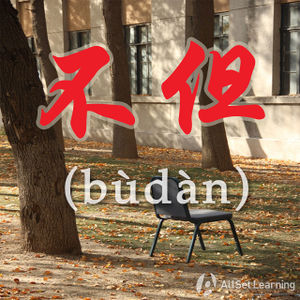Difference between revisions of "Expressing "on the contrary" with "fan'er""
Wu.mengmeng (talk | contribs) |
|||
| Line 35: | Line 35: | ||
* [[Modern Mandarin Chinese Grammar: A Practical Guide]] (pp. 259) [http://www.amazon.com/gp/product/0415700108?ie=UTF8&tag=allset-20&linkCode=as2&camp=1789&creative=390957&creativeASIN=0415700108 →buy] | * [[Modern Mandarin Chinese Grammar: A Practical Guide]] (pp. 259) [http://www.amazon.com/gp/product/0415700108?ie=UTF8&tag=allset-20&linkCode=as2&camp=1789&creative=390957&creativeASIN=0415700108 →buy] | ||
| + | === Websites === | ||
| + | |||
| + | * 汉语教学: [[http://ffff 反而]] | ||
[[Category: B2 grammar points]] | [[Category: B2 grammar points]] | ||
Revision as of 03:20, 3 July 2012
-
Level
-
Similar to
-
Used for
-
Keywords
反而 (fǎn'ér) is used to express "on the contrary" or "in contrast," with 反而 going in the second part of the sentence.
Structure
[Clause 1], 反而 + [Clause 2]
Note that "clauses" are used above. This means that you need a subject (possibly implied) and verb on both sides of the 反而, and not just one word.
Examples
Here are some examples of 反而 in action:
- 天气 预报 说 今天 是 大晴天,结果反而下 了 一整天 的 雨 。
- 他 觉得 所谓 的 发展 不 是 进步,反而 是 退化。
- 商家 简化 说明书 是 为了 方便 消费者,结果 反而 弄巧成拙 了。
See also
Sources and further reading
Books
Websites
- 汉语教学: [反而]



